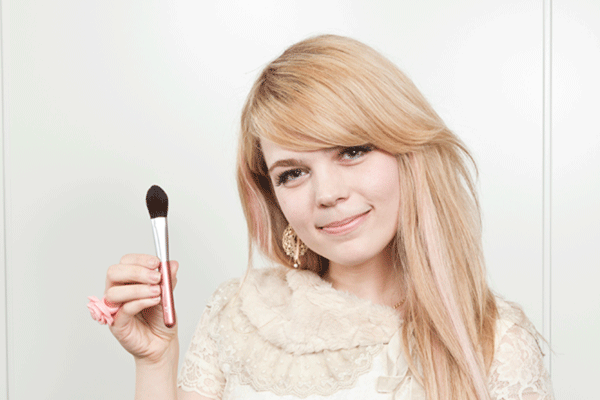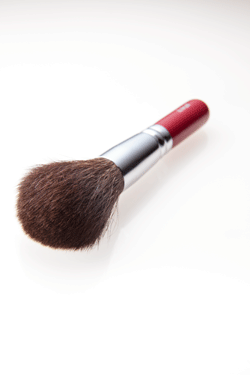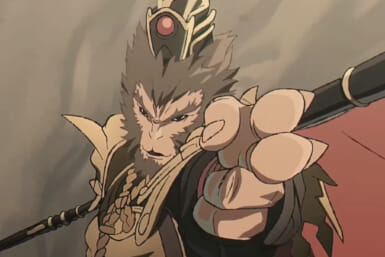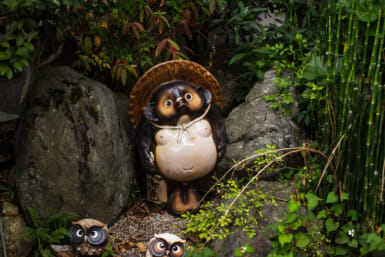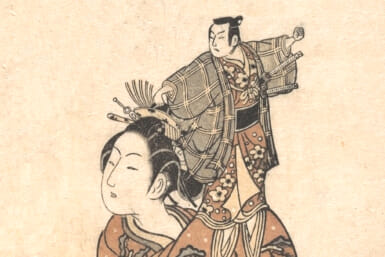Professional makeup artists around the world love them, but did you know that brushes from makers such as Mizuho (if you know make up, chances are you’ve likely used one at some point) and Hiroshima Artist Brush Manufacturing are upholding traditional techniques passed down between craftspeople for hundreds of years?
The beginning of brush production in Kumano, Hiroshima prefecture, dates back to the Edo period, when farmers left the area to find work during the off season. When the farmers returned home for the rice-planting season, they were said to have bought writing brushes and ink in the Nara region and made profits by selling them on the way home. These farmers then came up with the idea of producing and marketing writing brushes of their own.
The techniques of brush making flourished in Kumano, which after a time became known as the City of Brushes – but this is not simply due to its industrial heritage: even today locals produce 80% of all painting, calligraphy and now make up brushes made in Japan.
Nowadays, despite modernization meaning the public wants more makeup than calligraphy brushes, Kumano is still a place where experienced craftspeople work with their hands to make brushes one by one.
Continuing with brush-making techniques inherited from generations of Kumano makers, Mizuho has become the most well known manufacturer and it handles all stages of production from attaching hairs to handles, to their inspection. Created as purely a manufacturing company – most of its items are marketed and sold under other names – it recently celebrated its third decade in the business, creating quality handmade brushes that are at home in the hands of world-class artists and that international brands recognize and recommend.
The process has numerous steps: starting with the task of combing hairs neatly (many kinds of animal hairs are used in brushes of the Hiroshima Artist Brush Manufacturing and Mizuho, including pine squirrel, goat, water badger, sable, and pony) and blending different types to achieve customers’ requirements – think soft and round for cheek definition, or precise and flat for eye shadow smudging.
Once tips have been carefully combed to remove loose hairs – with a small knife called a hansashi – experienced workers ensure quality control and are able to recognize and remove loose or inferior strands of hair. Although arduous and lengthy, this important step ensures that only the highest quality brushes reach market.
The essence of the quality of a hand-made brush made in the traditional way, as opposed to by machine, is in its tip, which requires a high level of craftsmanship. One of the secrets behind the brushes is that the ‘natural’ tip of each hair is uncut, allowing it to get into pores and remove dirt and oil effectively. To achieve the required brush tip shape, workers use wooden holders called koma.
Next comes the assembly, when shaped hair is inserted into the ferrule (a fastener), then glue is applied to attach the ferrule and hair tip solidly, and the brush is thoroughly washed. The last step involves attaching fully dried brush tops to the handle. The brush is inspected to ensure no loose or inferior hairs remain, and is finally ready for the market.
Makeup artists particularly covet Kumano cosmetic brushes. They hold powder and apply it onto skin very smoothly, are soft to touch, comfortable to handle and deliver results. The brushes for facial cleansing lather up very well – synthetic hair can’t quite match this – and create extremely fine bubbles with a creamy smoothness. The brushes for cleansing around the nose are perfect for wiping oil, gently but thoroughly, from an area where pores are prone to becoming clogged.
Brushes of Hiroshima Artist Brush Manufacturing and Mizuho are a staple in the toolkit of professional makeup artists and beauty-savvy women, as a long history of craftsmanship has evolved into a product of superb quality. This in turn has meant that the people of Kumano-cho, Hiroshima prefecture, can to this day thank brush making for much of the success of their local economy.
For more information on the craftspeople of Japan and to buy some of the products talked about here, visit JCRAFTS.com, an online shop that sells items with engrained Japanese spirit to 120 countries worldwide while aiming to also teach you all about where they come from.
Text by Vivian Morelli

